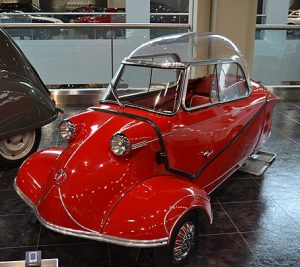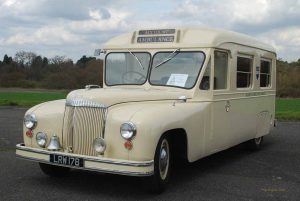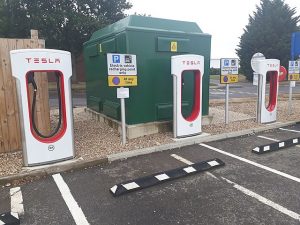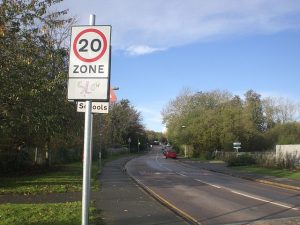
I have a confession to make: I have always loved cars. From my first Messerschmitt KR200 three-wheeler when I was sixteen to the ‘extended range EV’ Vauxhall Ampera I have now, I’ve pretty much always had one. Cars have played an important role in the liberation of the working class, and the broadening of working people’s horizons. But can we continue to justify the use of personal transport as we battle to tackle climate change? Does the motor car, whether fuelled by petrol or electricity, still have a role?
As a teenager, trying to run a car on the money I got from stacking supermarket shelves on a Saturday wasn’t easy. I spent a lot of my free time squeezing through the oil-soaked mud of scrapyards to retrieve spare parts, which is probably why I failed my A Levels. And ever since, cars have been a frequent worry, and have consumed a big chunk of my personal income. But my life would have been very different without them. It would have been less fulfilled, with a much-diminished experience. So I’m grateful to my cars. Cars give you a freedom and spontaneity that conventional public transport can never achieve. If I want to go to Scotney Castle and enjoy the snowdrops in spectacular sunshine this afternoon, I can do that in a car. To do it by public transport would take a lot of planning, and would take much longer. I certainly wouldn’t get there before it closed.
Growing up in the sixties, my parents’ generation was the first to have access to the freedom and comfort that a car could provide. My father worked for Surrey County Council as an ambulance driver when I was born. He cycled six

miles to the ambulance station, in all weathers, as there were no suitable buses, particularly when he was on night shifts. He suffered from asthma, and after almost dying after cycling home one night in the snow, my mother said that, somehow, we had to get a car. We owned our own home, with a garage. In those post-war years, houses were more affordable than cars. Our 1930s semi cost £1,300 in 1950, the equivalent of about £34,000 today. That’s only twice the cost of a new Ford Consul, an average family saloon car of the time. The mortgage repayments on our home were not much over a fiver a month, or about the same as the rent on a council house.
So my parents converted the garage into a deep litter house to raise chickens for Christmas. Nobody ate turkey for Christmas back then – chicken was still an expensive luxury, and as much as most could afford. And my father was a bit of a poultry expert. Before he became an ambulance driver, he’d run Woking Co-op’s poultry advice service. That’s how he’d met my mother, advising her on broodiness. In her chickens, that is.

One of my earliest memories is of my aunts and uncles turning up at the house a week before Christmas to slaughter, pluck and draw the chickens. I remember being given a chicken leg to play with. The experience probably affected me for life, but at least the car-funding enterprise succeeded. Early in the new year, all the deep litter straw was shovelled out of the now unoccupied garage and replaced with a Studebaker Station Wagon – a vehicle abandoned by returning US troops after the war. It was huge. So big, they could stand me in my high chair in the back. As the high chair was unsecured, my father had to drive slowly round corners, or the high chair fell over. Which it did, occasionally, apparently. I don’t remember that, possibly because of concussion. But nobody had much of an idea about risk back then. From a safety point of view, they might as well have strapped me to the front bumper.

From then on, we always had a car. And car ownership became increasingly popular, as more of the post-war manufacturing economy converted to peace-time production. More cars were built, and second-hand cars got cheaper. My parents’ Studebaker didn’t last long, before being replaced with a rather more sensible Ford Popular. When they bought a grocery and hardware shop, the car was replaced by a Bedford CA Workabus, a van with windows and wooden bench seats, that could serve as both car and delivery vehicle. It was perfect for transporting my aunt, uncle, and three cousins, along with my parents and I, and the dog, down to Hayling Island to visit my grandparents for the weekend. My favourite of my father’s cars was probably the Sunbeam Rapier – even the name sounds fast and optimistic. I learned to drive in that, and the Singer Gazelle that preceded it. In those cars, we went out for picnics on Sundays, we went on holiday, we visited countryside beauty spots, stately homes, gardens, parks, museums … all manner of places it would have been hard to reach on public transport. And my father could get to work safely, without risk to his health. Unless you count the risk of a road traffic accident.

Those early years epitomise the liberation and social cohesion that car ownership allowed. Before the fifties and sixties, a day out in the country had been the preserve of the middle and upper classes. Families separated by more than a few miles rarely got to see each other unless they were on a convenient public transport route. Now all this was in reach of the masses, and it changed the way working class people thought about their place in society. For many working people, owning and maintaining a car wasn’t easy, it still isn’t, and has always been out of the reach of some. But many sacrifice other possessions and luxuries to afford one, it’s that important. When my father died in 1996, he lived in a housing association flat. The money from the house had disappeared in a failed business. The only thing he possessed of any monetary value was his Ford Escort Ghia.
But times have changed. Back in those heady, optimistic days of the 50s and 60s, our only concern was that one day the petroleum might run out. The true impact of the pollution caused by cars, and their contribution to catastrophic carbon dioxide emissions and the biodiversity crisis, was yet to be recognised. That can no longer be ignored. Even the government has recognised that, introducing a target for the end of the sale of Internal Combustion Engine (ICE)

cars by 2030. That’s going to be difficult to achieve, as new electric cars are not readily available, with long wait times. I’ve had a Cupra Born on order since October, and it’s not expected to be delivered till May. The shortage of silicon chips, and the war in Ukraine, which is a major supplier of car components to the European market, are contributing to this. And they’re expensive. I’ve had to dip heavily into my pension fund to buy one, which wasn’t very big in the first place. High electricity prices are putting people off too. When I bought the Ampera ten years ago, it was six times more expensive to run it on petrol than on electricity, if you use a home charger. Now, it’s only twice as expensive. And at some public commercial charging stations, the electricity can work out more expensive than petrol. That will probably change, as electricity and oil prices re-balance.
I do find opposition to the introduction of EVs bizarre though, from those who still insist that ICE vehicles are better. Even the presenters of Top Gear recently acknowledged that argument was redundant. The best EVs, they said, are now faster, handle better, are cheaper to run and maintain, and are safer than the best ICE cars. They’ve won, it’s over. But imagine we’d all been driving electric cars for the last hundred years. A company declares that it’s come up  with a revolutionary new type of engine. It’s less powerful, far more expensive to run, more complicated and more difficult to maintain, it’s noisy and dirty, it has zero power at zero rpm so you have to keep it running when you’re stationary and use a clutch, its usable power is produced over a very narrow rpm range so you have to employ a complicated gearbox, it’s harder to drive, the engine takes up more space, it produces toxic pollutants that have to be filtered out of its copious emissions, it pumps out huge quantities of greenhouse gases, and it smells. Everyone would say … why? I can’t imagine that they’d have many customers.
with a revolutionary new type of engine. It’s less powerful, far more expensive to run, more complicated and more difficult to maintain, it’s noisy and dirty, it has zero power at zero rpm so you have to keep it running when you’re stationary and use a clutch, its usable power is produced over a very narrow rpm range so you have to employ a complicated gearbox, it’s harder to drive, the engine takes up more space, it produces toxic pollutants that have to be filtered out of its copious emissions, it pumps out huge quantities of greenhouse gases, and it smells. Everyone would say … why? I can’t imagine that they’d have many customers.
I think buying an EV is something all of us should do, if we can possibly afford it, and if we want to maintain a personal transport vehicle. We need people who can afford it to buy new EVs, to make more affordable second hand vehicles available. And the more people that buy EVs, the lower future prices will be.
But is an electric car more sustainable than an ICE, over its lifetime? Doing a bit of research on this reveals that the consensus is yes, they are, by a long way. For an ICE car, the accepted formula for lifetime carbon footprint is that ten percent of the carbon goes into the production, five percent into the disposal, and eighty five percent into fuel consumption. So although an EV has a production carbon footprint fifty percent higher than an ICE, its carbon emissions from fuel consumption are close to zero, if you charge it entirely from electricity generated from sustainable sources. So its lifetime carbon footprint is way lower.
It is true of course that combustion emissions from cars are not the only kind of pollution coming from vehicles. There’s also dust from tyres, and from brakes, although brake dust pollution is much reduced in EVs because of regenerative braking. These pose a significant risk to health, if not to the environment. But those who argue that we should get rid of cars altogether are, I would suggest, heavily weighting their arguments from a personal perspective. Some people don’t like driving, or sitting in a car, and prefer public transport. Personally, I enjoy both. I also find driving quite mindful and not the least bit stressful, it’s something I enjoy doing for the pleasure of it. I know many other drivers don’t feel that way though. But that ability to go where you want, when you want, that you get from a car is a big bonus for me, and one that much of the car-driving public won’t give up easily. And why should they, when personal transport was such a transformational freedom when it became accessible to working class people in the 50s and 60s? Car ownership has increased consistently in the UK for the last hundred years. It has started to decline over the last two years, but that seems largely due to the shortage of components reducing the availability of new cars and pushing up second hand car prices, making them less affordable. Overall, there’s no  indication that the British public are any less wedded to the idea of car ownership than they have ever been. If we take away access to cars from working class people, yes, our streets and towns would be safer, quieter, and more pleasant. But you can bet your life that the rich would still have access to personal transport. If you have the money, you can get what you want. That’s not going to change anytime soon. There are other ways to achieve safer, less congested towns and cities, by banning cars from town centres and introducing lower speed limits, rather than getting rid of cars altogether. A few car users campaign against that, but some London boroughs are already entirely 20mph zones, a trend that’s likely to spread to all towns and cities. ‘Twenty’s Plenty’ has a good, sensible ring to it.
indication that the British public are any less wedded to the idea of car ownership than they have ever been. If we take away access to cars from working class people, yes, our streets and towns would be safer, quieter, and more pleasant. But you can bet your life that the rich would still have access to personal transport. If you have the money, you can get what you want. That’s not going to change anytime soon. There are other ways to achieve safer, less congested towns and cities, by banning cars from town centres and introducing lower speed limits, rather than getting rid of cars altogether. A few car users campaign against that, but some London boroughs are already entirely 20mph zones, a trend that’s likely to spread to all towns and cities. ‘Twenty’s Plenty’ has a good, sensible ring to it.
So the move to EVs is entirely logical, and something the government can achieve without widespread condemnation. Indeed, it’s more likely to have public support. The additional cost of EVs might well mean there are fewer cars on the road, which is good, although restricting the public’s access to desired and needed commodities by cost is not desirable, and not popular. But removing access to personal transport altogether is less logical, and would be strongly resisted. I can’t see it featuring in any political manifesto anytime soon.

What will happen to all the existing ICE cars after 2030? Presumably, they’ll just be allowed to wither away, those still running becoming classic cars in due course. I do hope that those remaining classics will be allowed to continue to use the road, in much the same way that preserved railway engines are allowed to burn coal. And yes, I am, or have been an owner of a classic car: a 1958 MG Magnette. I’ve sold it now, but I intend to replace it with something of a similar vintage. There’s no rational logic for owning one, it’s merely for the pleasure it gives the driver, as well as the pleasure it provides for those who come to car shows to look at it. There’s an interesting point about the lifetime carbon footprint of classic cars too. My eco-friends have tended to be very sniffy about my MG, although avoid being directly critical since most of them fly regularly and the closest I’ve come to an aircraft since I last flew in 1994 is building an Airfix kit of a Lancaster. But consider this, eco-friends. My MG Magnette was built in Oxford from components almost all of which were sourced within fifty miles or so. Very little plastic was used in its production, it’s an ensemble of leather, wood and metal. True, it has no emissions control, and its carbon dioxide output per mile is way higher than a modern car. But then, it’s hardly ever used. Like most classic cars, it has only averaged about a thousand miles a year for the last fifty years or so. Although I’ve yet to come up with any calculations, I’m betting the lifetime carbon footprint per year of that old MG is way less than that of a modern ICE car, or indeed an electric car.
So would anything make me give up my car voluntarily? Yes. I can envisage a time in the future, if not in my lifetime, when self-driving cars become commonplace. It’s not hard to imagine a world where you could summon up a self-driving EV from your phone, or whatever has replaced phones by then, that would take you wherever you wanted to go. It would do this cheaply, then zip off to the next traveller, or plug itself in to a charging station like one of those robot lawnmowers. It would be way cheaper than owning a car but would still provide the individual freedom that cars give us. I accept that if that were to come to pass, then I could get rid of my car. But not the MG, or whatever other classic I might choose to own … that’s just for the fun of it. We all must have our vices, as long as they don’t contribute too heavily to destroying the planet.
